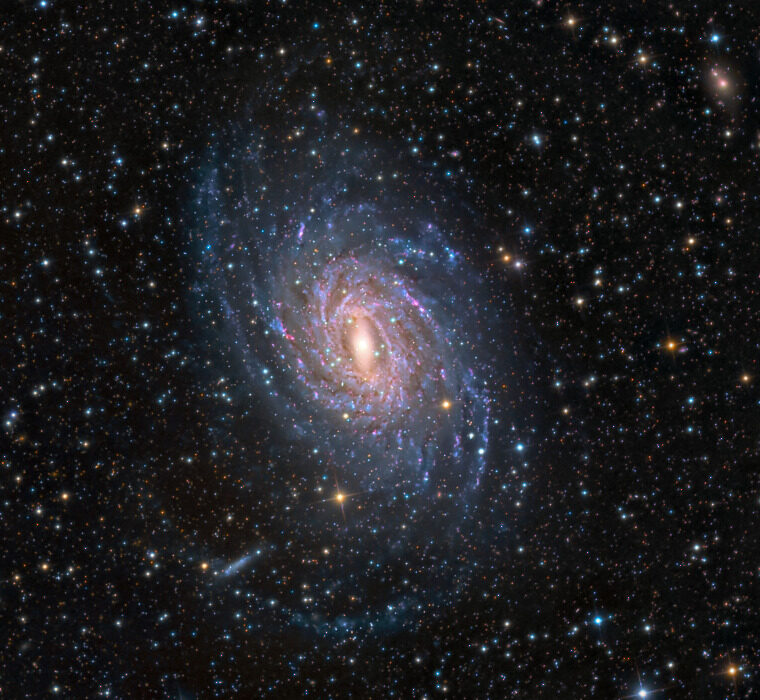Since the dawn of human consciousness, we have gazed at the stars with wonder, imagining that we are not alone in the vastness of the cosmos. The night sky, a sprawling tapestry of light and darkness, has always invited us to ask: if we are here, could someone else be there too? This question has transcended myth and religion, evolving into a rigorous scientific inquiry over the past century. Today, as our technology grows ever more sophisticated, the tantalizing possibility of making contact with intelligent extraterrestrial life has shifted from the realm of fantasy into the frontiers of empirical research.
Yet the challenge is immense. The universe is not only vast in distance but staggering in time, complexity, and diversity. Our own species has existed for mere hundreds of thousands of years in a galaxy that is more than 13 billion years old. In this cosmic expanse, even civilizations with advanced technology may be rare, transient, or hidden behind the veil of physical laws that bind all matter and energy. Still, science continues to search, propelled by curiosity, reason, and the profound human desire for connection.
The Drake Equation: Estimating the Unseen
In 1961, astronomer Frank Drake formulated an equation designed to estimate the number of communicative civilizations in our galaxy. The Drake Equation is not a formula for certainty but a framework to explore the variables that determine the likelihood of intelligent life. It considers the rate of star formation, the fraction of stars with planets, the number of planets capable of supporting life, the probability of life arising, the probability of intelligence developing, the lifespan of technological civilizations, and more.
Though many of these variables remain uncertain, recent advances in astronomy have provided tantalizing hints. The discovery of thousands of exoplanets, some residing in the so-called “habitable zone” where liquid water could exist, suggests that potentially life-supporting worlds may be common. Yet habitability does not guarantee intelligence. The evolutionary path from simple microbial life to a technological civilization like ours may be extraordinarily rare. Earth itself took over four billion years to produce a species capable of reaching for the stars, a process shaped by countless contingencies, from asteroid impacts to mass extinctions.
Even if intelligent life emerges elsewhere, the vast distances between stars impose staggering obstacles. Signals traveling at the speed of light can take decades, centuries, or millennia to traverse even the nearest interstellar distances. The Milky Way galaxy alone spans roughly 100,000 light-years, meaning that even if civilizations exist, the chance of overlapping technologically is uncertain. This is one reason the search for extraterrestrial intelligence, or SETI, requires both patience and audacious imagination.
Listening for the Cosmic Whisper
SETI has long been humanity’s most systematic attempt to reach beyond our solar system. Radio telescopes sweep the skies, searching for signals that might betray the presence of alien civilizations. The premise is simple yet profound: if intelligent beings use technology, they may emit electromagnetic waves detectable across interstellar distances.
One of the most famous instances was the “Wow! Signal” detected in 1977 by a radio telescope in Ohio. The signal, lasting just 72 seconds, bore characteristics that made it an intriguing candidate for an extraterrestrial origin, yet it never repeated. Such fleeting phenomena highlight the immense challenge: signals may be rare, brief, or obscured by cosmic noise. Even as we scan the heavens with ever-more sensitive instruments, the universe may be whispering at frequencies we have yet to recognize or with technologies beyond our comprehension.
Modern approaches have expanded beyond traditional radio searches. Optical SETI looks for laser flashes that might serve as intentional beacons, while infrared surveys seek heat signatures of hypothetical megastructures, such as Dyson spheres, that advanced civilizations might construct to harness stellar energy. Even exoplanet atmospheres are being scrutinized for chemical signatures—oxygen, methane, or other markers—that could indicate biological activity. Every advance brings us closer to the possibility of detection, yet the fundamental obstacle remains: the universe is not obliged to announce itself.
The Fermi Paradox: Silence in the Stars
Despite these efforts, we have yet to find unambiguous evidence of intelligent life. This puzzling reality gives rise to the Fermi Paradox, named after physicist Enrico Fermi, who famously asked: “Where is everybody?” If intelligent civilizations are statistically likely, why do we see no signs of them?
Numerous explanations have been proposed. Civilizations may self-destruct before developing interstellar communication, a sobering possibility that resonates with humanity’s own environmental and geopolitical challenges. They might choose deliberate silence, adhering to a cosmic “prime directive” to avoid contact with emerging civilizations like ours. Alternatively, advanced civilizations may operate on timescales or through mediums incomprehensible to us, such as communication through neutrinos, gravitational waves, or technologies we cannot yet conceive.
Another perspective, the concept of the “Great Filter,” suggests that one or more stages in the evolution of life are extraordinarily difficult to surpass. Perhaps the emergence of intelligence, the development of technology, or the survival of civilizations long enough to colonize space is rare. If so, our own existence is remarkable, precarious, and perhaps unique in ways we cannot yet measure.
Could Contact Happen Soon?
While cosmic distances impose severe limitations, there are avenues that suggest contact could be possible within a human lifetime, though the probability remains uncertain. Within our own solar system, robotic probes may eventually detect microbial life on moons like Europa, Enceladus, or Titan. While these organisms would not be intelligent, such discoveries would transform our understanding of life’s ubiquity and suggest that intelligence elsewhere is plausible.
On the interstellar front, the detection of a repeating signal with an identifiable pattern would constitute a breakthrough. Modern radio arrays, such as the Square Kilometre Array, will be capable of surveying the skies with unprecedented sensitivity, potentially revealing signals that current instruments cannot detect. Moreover, artificial intelligence may play a pivotal role in filtering vast quantities of data, identifying patterns that human analysts might overlook.
Humanity may also take a more proactive stance through METI—Messaging Extraterrestrial Intelligence. By sending carefully constructed signals into space, we could announce our presence to the cosmos. Yet this approach carries both hope and risk. Without knowing the intentions or nature of distant civilizations, we cannot predict the consequences of such contact. The debate over whether to broadcast our existence reflects not only scientific uncertainty but profound philosophical and ethical considerations.
Lessons from Earth: The Challenge of Understanding
Even if a signal arrives tomorrow, interpreting it will be a monumental task. Human language, culture, and cognition are the products of billions of years of evolution on a single planet. An alien civilization may communicate in forms utterly alien to us, shaped by sensory systems, social structures, and technologies that we cannot fathom. Understanding intent, context, and meaning may take decades, if not centuries.
Yet this challenge also inspires hope. Our own history demonstrates an extraordinary capacity for adaptation and interpretation. Consider the deciphering of ancient languages, or the understanding of abstract scientific concepts that once seemed unintelligible. If humans can translate alien signals, it may require a collective effort, uniting linguists, mathematicians, computer scientists, and philosophers in a pursuit of cosmic comprehension. The act of making contact may thus be as much a test of our own civilization’s maturity as a discovery of extraterrestrial intelligence.
The Psychological and Cultural Implications
The impact of discovering intelligent life would be profound, reshaping our understanding of humanity’s place in the universe. Philosophers and theologians have long speculated about the consequences. Would we feel awe, fear, or humility? How would our religions, political systems, and social structures respond? The arrival of knowledge that we are not alone may unite humanity under a common identity or, conversely, exacerbate divisions.
Historically, encounters between human cultures with different technological levels have often produced conflict. Yet in the cosmic arena, the rules may be different. An advanced civilization capable of interstellar travel or long-distance communication would likely possess knowledge and capabilities far beyond our own. In such a scenario, the ethical imperative may be to approach contact with caution, respect, and a readiness to learn.
The Role of Technology in Expanding Our Reach
Technological advancement is the key that makes contact feasible. Our radio telescopes and optical observatories have grown exponentially in power, enabling us to detect faint signals from across the galaxy. Satellite networks and interstellar probes extend our observational reach, while computing power allows us to model entire planetary systems, predict habitability, and simulate communication strategies.
Emerging technologies, such as quantum communication and AI-driven pattern recognition, promise to accelerate our search. Quantum sensors may detect subtle signatures of alien technology, while machine learning algorithms sift through the noise of cosmic data, identifying anomalies that could be signals. Humanity is approaching a point where the combination of observational reach, computational power, and analytical sophistication may finally allow us to bridge the vast gulf between stars.
A Future of Possibility and Uncertainty
Despite the optimism inspired by modern technology, uncertainty remains fundamental. The universe may be teeming with life that is simply unreachable or undetectable. Civilizations may exist for only brief cosmic instants, their signals disappearing before we develop the capacity to hear them. Or we may discover that intelligence evolves in ways radically different from our own, producing life forms that are alien not only in physiology but in perception and cognition.
Yet the very act of searching is transformative. Even without contact, the search for intelligent life deepens our understanding of the cosmos and ourselves. It challenges us to confront our assumptions, expand our imagination, and consider the fragility and value of our own existence. In this sense, the pursuit of extraterrestrial intelligence is a mirror: it reflects not only the stars but the aspirations, fears, and creativity of humanity.
Conclusion: Listening to the Cosmic Symphony
Could humans make contact with intelligent aliens soon? The answer is uncertain, yet the possibility is no longer mere speculation. Advances in technology, astronomy, and artificial intelligence have brought the question into the realm of practical exploration. While cosmic distances, temporal mismatches, and the profound diversity of life may delay or complicate contact, the act of searching has already transformed our civilization, inspiring wonder, curiosity, and humility.
If contact occurs, it will be more than a scientific milestone. It will be a cultural, philosophical, and emotional turning point, revealing that our species is part of a universe far richer and stranger than we ever imagined. Until that day arrives, we continue to gaze at the stars, listening for a whisper from the void, imagining that somewhere out there, another consciousness may be asking the same question about us.
In the end, the search for intelligent life is as much a journey inward as outward. It is an affirmation of human curiosity, resilience, and imagination—a testament to the enduring desire to connect, understand, and belong in a cosmos that is both indifferent and endlessly compelling.






